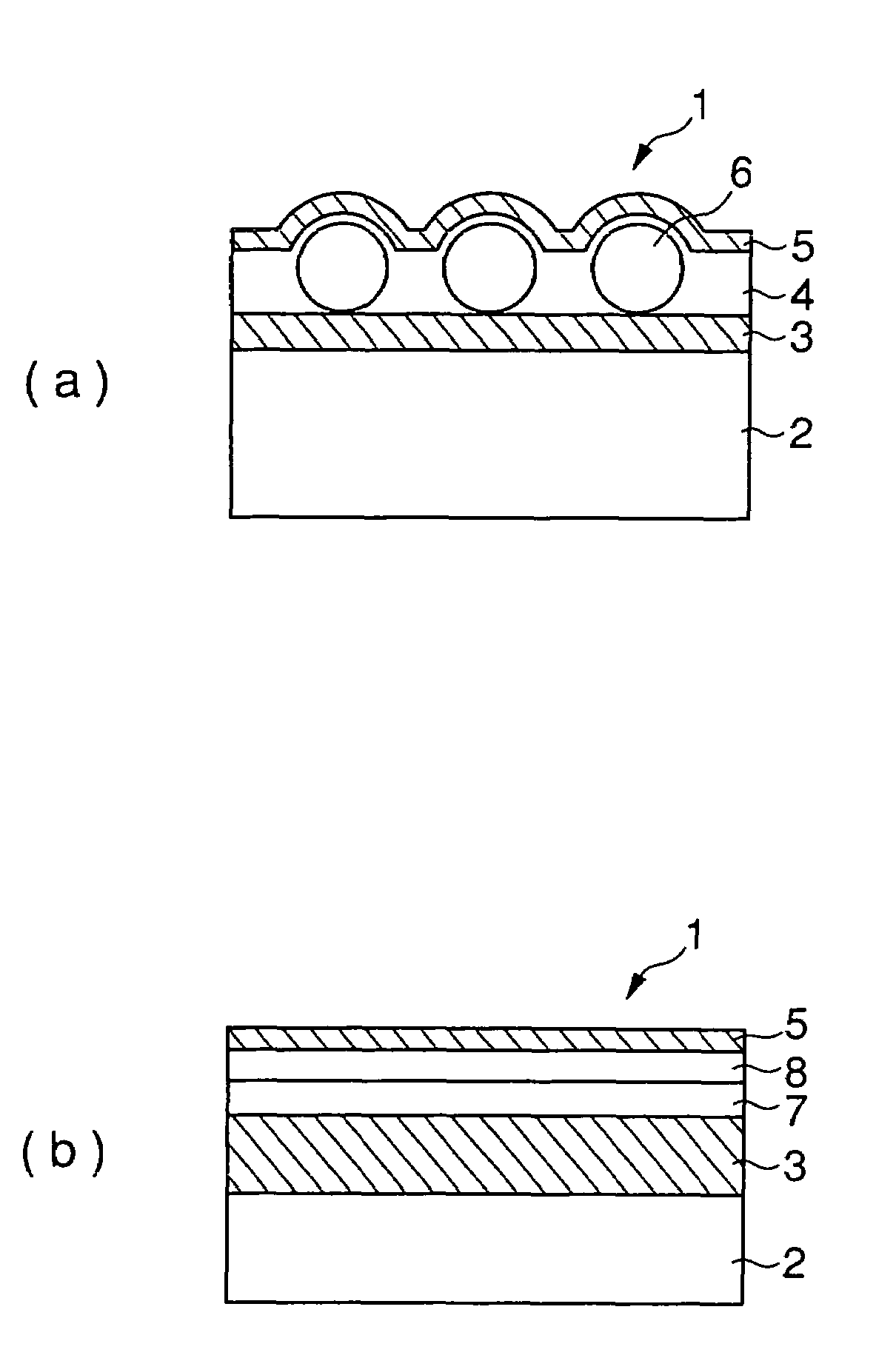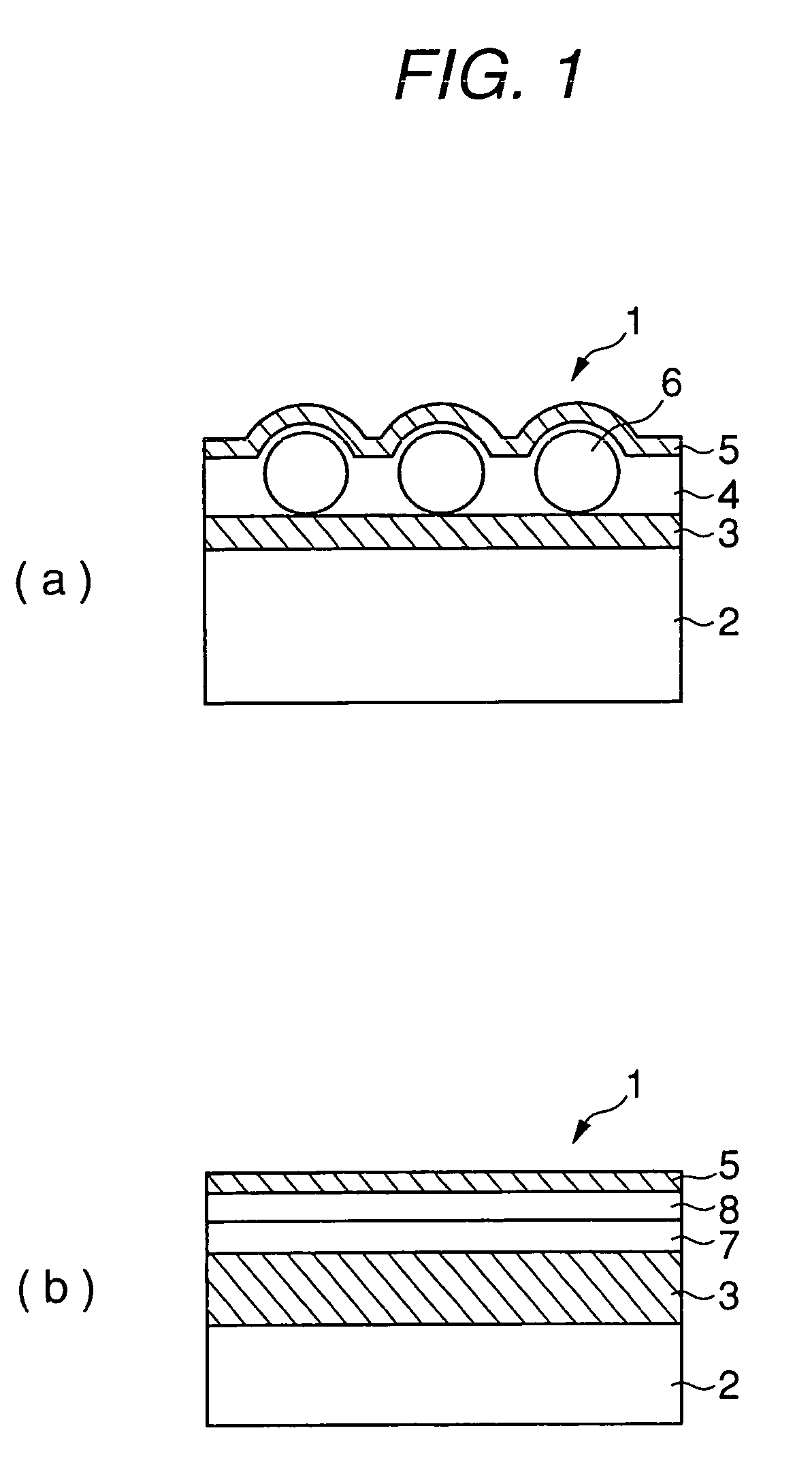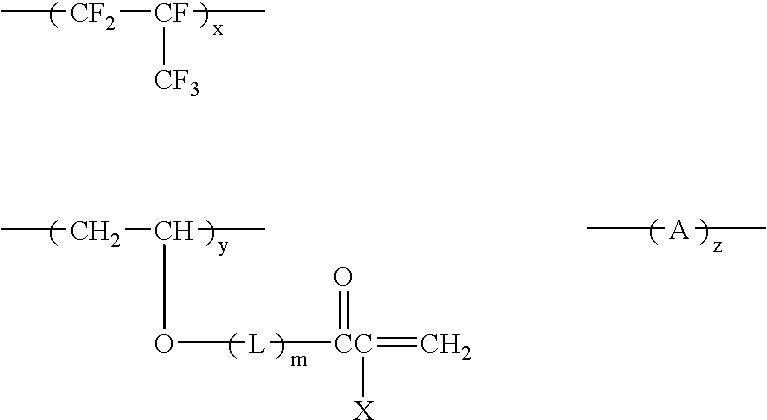Antireflection film, polarizing plate and image display device
a technology of anti-reflection film and polarizing plate, which is applied in the direction of polarizing elements, instruments, other domestic objects, etc., can solve the problems of low scratch resistance, low scratch resistance, and difficulty in realizing a low refractive index and a high scratch resistance at the same time, so as to improve the scratch resistance and high anti-reflection property
- Summary
- Abstract
- Description
- Claims
- Application Information
AI Technical Summary
Benefits of technology
Problems solved by technology
Method used
Image
Examples
example 1
(1) Formation of Antiglare Hard Coat Layer
[0364]A 80 μm-thick triacetyl cellulose film (TAC-TD80UL, produced by Fuji Photo Film Co., Ltd.) in a roll form was unrolled and thereon, Coating Solution A for antiglare hard coat layer prepared above was coated using a doctor blade and a microgravure roll having a diameter of 50 mm and having a gravure pattern with a line number of 180 lines / inch and a depth of 40 μm, at a gravure roll rotation number of 30 rpm and a transportation speed of 10 m / min. Thereafter, the coating solution was dried at 60° C. for 150 seconds and then an ultraviolet ray was irradiated thereon at an illuminance of 400 mW / cm2 and a dose of 250 mJ / cm2 using an air cooled metal halide lamp of 160 W / cm (manufactured by I-Graphics K.K.) under nitrogen purging to cure the coating layer and thereby form an antiglare hard coat layer having a thickness of 4.3 μm. Then, the film was taken up.
(2) Formation of Low Refractive Index Layer
[0365]The triacetyl cellulose film having...
example 2
(Preparation of Coating Solution for Hard Coat Layer)
[0416]To 315.0 g of a dipentaerythritol pentaacrylate and dipentaerythritol hexaacrylate mixture (DPHA, produced by Nippon Kayaku Co., Ltd.), 450.0 g of a methyl ethyl ketone dispersion solution of silica fine particle (MEK-ST, solid concentration: 30 mass %, produced by Nissan Chemicals Industries, Ltd.), 15.0 g of methyl ethyl ketone, 220.0 g of cyclohexanone and 16.0 g of a photopolymerization initiator (Irgacure 907, produced by Nippon Ciba Geigy) were added and stirred. The resulting solution was filtered through a polypropylene-made filter having a pore size of 0.4 μm to prepare a coating solution for hard coat layer.
(Preparation of Titanium Dioxide Fine Particle Dispersion Solution)
[0417]The titanium dioxide fine particle used was a titanium dioxide fine particle (MPT-129, produced by Ishihara Sangyo Kaisha, Ltd.) containing cobalt and surface-treated by using aluminum hydroxide and zirconium hydroxide.
[0418]To 257.1 g of t...
example 3
[0439]A PVA film was dipped in an aqueous solution containing 2.0 g / liter of iodine and 4.0 g / liter of potassium iodide at 25° C. for 240 seconds and further dipped in an aqueous solution containing 10 g / liter of boric acid at 25° C. for 60 seconds. Subsequently, the film was introduced into a tenter stretching machine in the form shown in FIG. 2 of JP-A-2002-86554 and stretched to 5.3 times. Then, the tenter was bent as shown in FIG. 2 with respect to the stretching direction and thereafter, the width was kept constant. The film was dried in an atmosphere at 80° C. and removed from the tenter. The difference in the conveyance speed between right and left tenter clips was less than 0.05% and the angle made by the center line of film introduced and the center line of film delivered to the next step was 46°. Here, |L1-L2| was 0.7 m, W was 0.7 m and a relationship of |L1-L2|=W was established. The substantial stretching direction Ax-Cx at the tenter outlet was inclined at 45° with resp...
PUM
| Property | Measurement | Unit |
|---|---|---|
| refractive index | aaaaa | aaaaa |
| thickness | aaaaa | aaaaa |
| refractive index | aaaaa | aaaaa |
Abstract
Description
Claims
Application Information
 Login to View More
Login to View More - R&D
- Intellectual Property
- Life Sciences
- Materials
- Tech Scout
- Unparalleled Data Quality
- Higher Quality Content
- 60% Fewer Hallucinations
Browse by: Latest US Patents, China's latest patents, Technical Efficacy Thesaurus, Application Domain, Technology Topic, Popular Technical Reports.
© 2025 PatSnap. All rights reserved.Legal|Privacy policy|Modern Slavery Act Transparency Statement|Sitemap|About US| Contact US: help@patsnap.com



